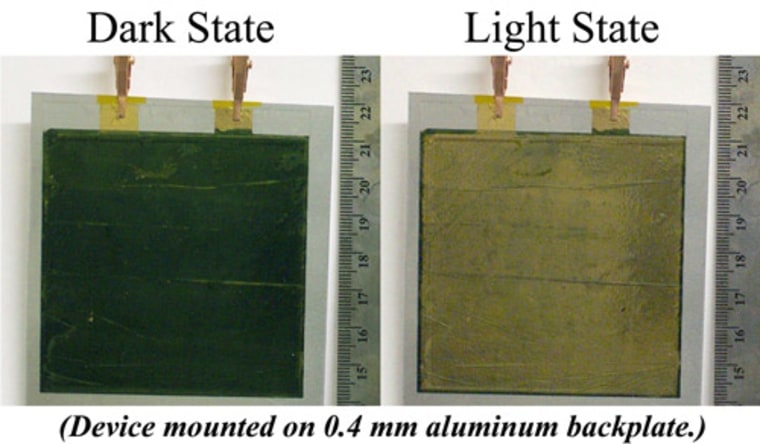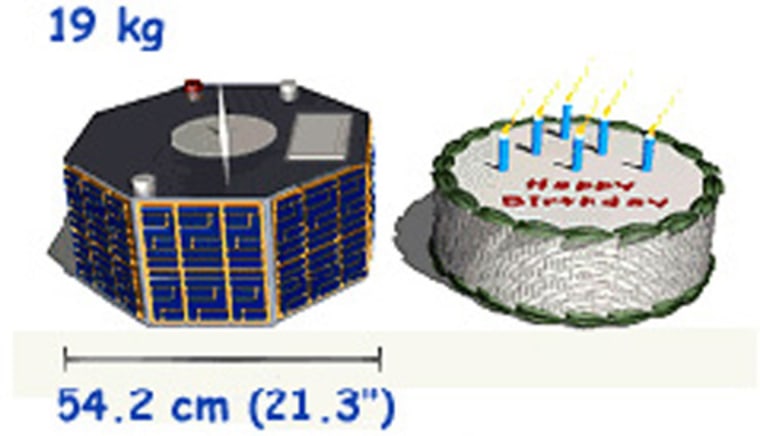Fleets of miniature spacecraft may now be closer to liftoff.
To bring this sci-fi vision of 50-pound "micro-spacecraft" and 10-pound "nano-spacecraft" to reality, scientists have now invented a razor-thin skin that can protect craft against the extreme heat and intense cold found in outer space and withstand micrometeoroids hurtling at thousands of miles per hour.
Since launching just 1 pound of anything into orbit costs roughly $5,000, researchers are now developing miniature lightweight spacecraft to send more probes and satellites up at lower cost. The U.S. military and NASA have already sent a number of test micro-satellites into space. NASA aims to get the first communications micro-spacecraft prototypes operational by 2013.
"You'd see micro-spacecraft mainly in communications. Instead of companies sharing a large satellite, you could have even small companies getting their own micro-spacecraft," said researcher Prasanna Chandrasekhar, a polymer chemist and materials scientist at research and development company Ashwin-Ushas Corporation in Lakewood, N.J., which is collaborating with NASA.
"For the military, undetectability is also important, either for surveillance applications or when it comes to zapping other satellites," Chandrasekhar added. "And when it comes to a spacecraft less than 5 kilograms (10 pounds), you can't really detect it unless it's within a quarter of a mile of you. Larger spacecraft can be detected from farther, and consequently blasted out of the sky."
Developing new kinds of spacecraft is challenging. Outer space is an extraordinarily hazardous environment, and spacecraft can be frying in harsh sunlight one moment and freezing in pitch black cold in another.
"It may sound very trivial, but controlling the temperature of a spacecraft is absolutely crucial. Currently, there is no way to do it for very small spacecraft," Chandrasekhar said.

In large spacecraft, loops of refrigeration pipes and what Chandrasekhar calls "glorified window blinds" help keep the machines cool. Besides their high weight and costs, such technologies are difficult or impossible to shrink down for miniature spacecraft, he explained.
Instead, the researchers developed an offshoot of a classified military technology — a slender, lightweight film less than a half-millimeter thick that feels like flexible plastic and can alter its color when given an electrical charge. This change of hue works not just in the visible spectrum, but in the infrared or heat range as well, meaning that it can go from radiating heat in hot temperatures to absorbing heat in freezing temperatures.
The film was cycled repeatedly between minus-58 degrees and 212 degrees Fahrenheit (-50 degrees to 100 degrees Celsius) in a vacuum for three months to simulate the intense heat and cold of space that probes routinely experience. The film successfully endured such tests, and kept items it was wrapped around at 122 degrees F to 176 degrees F (50 degrees C to 80 degrees C), "which is just fine for spacecraft," Chandrasekhar said.
Although thermal control technology makes up just one of many systems onboard spacecraft, "thermal control was really the big barrier to developing miniature spacecraft," Chandrasekhar told Space.com. "This should allow much more rapid development of micro- and nano-spacecraft."
Spacecraft also have to contend with micrometeoroids, bits of space debris traveling at more than 20,000 mph.
"The test for micrometeoroids was very simple — we just fired a gun loaded with small particles and tiny, harpoonlike needles at it," Chandrasekhar said. The film worked fine even after the mock micrometeoroids punched holes into it.
Spacecraft also have to contend with corrosive atomic oxygen, a serious problem for space stations and vital communications satellites, as well as harmful ultraviolet rays and blasts of charged particles from the constant solar wind and recurring solar flares. The film has a protective layer to guard against such atomic oxygen, and it also proved durable in tests with UV rays and charged particles.
Chandrasekhar said his team is working to get their advanced skin tested in space by the end of 2009.
"A lot of spacecraft engineers have come to us saying, 'If we had this technology, it would give us much greater design freedom for future micro-spacecraft,'" Chandrasekhar said.
Earthbound uses also exist for this film, such as in countries with hot or cold climates, which could build homes with this film to better control temperature cheaply. Chandrasekhar said they have already received overseas inquiries to make cinderblocks with this film.
The scientists detailed their findings on Tuesday at the national meeting of the American Chemical Society in Philadelphia.
